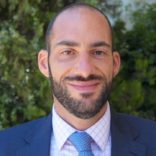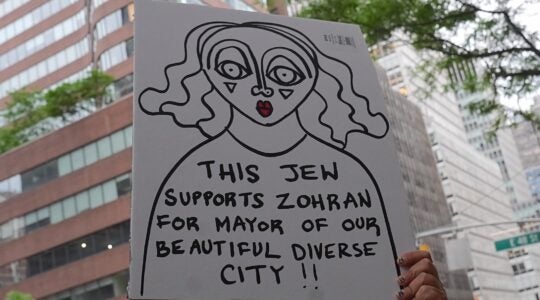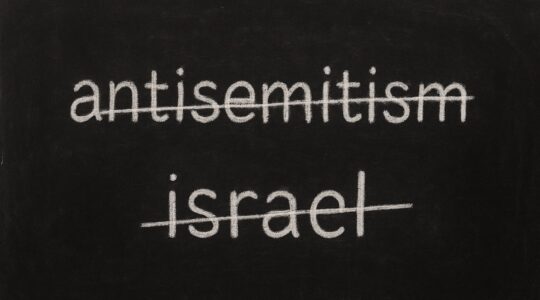Israeli Education Minister Rafi Peretz’s description of intermarriage and assimilation in the American Jewish community as being “like a second Holocaust” because it has resulted in the loss of six million Jews has been widely condemned, and rightly so. Holocaust comparisons always involve treading on dangerous ground, to which some members of Congress can attest, and it is particularly galling to see someone who should know better compare the genocidal extermination of European Jewry to individuals making choices about their private lives, identities and religious observance.
But amidst the furor over Peretz’s inappropriate Holocaust analogies, largely missed has been that Peretz’s analysis of American Judaism fundamentally misunderstands how it is different from Israeli Judaism, and goes to a larger question of whether to prioritize Judaism or Jews.
While Peretz’s comments are galling, it is easy to understand how he arrived at his conclusion. Like many Israelis, Peretz thinks of his Judaism as a religious and tribal identity. Assimilation and intermarriage fatally threaten both of these components. American Jews who marry outside of the tribe and have children who are not halachically Jewish, or who assimilate to an extent that they are no longer interested in religious ritualism like synagogue attendance or holiday observance, have none of the components of Jewish identity as Peretz conceives it. If Judaism isn’t based on a religious attachment or grounded in Jewish ethnicity, it is difficult for Israelis to view it as any type of Judaism that is familiar to them.
American Jews tend to view Jewish identity differently. American Judaism is more a cultural identity and a value system than it is a religious or ethnic identity. The prominence that American Jews place on “Jewish values” is what binds many American Jews together, rather than a genetic connection, religious compatriotism or a strong sense of a shared religious heritage. For many American Jews, intermarriage and secular assimilation do not threaten this identity because one can still cling just as strongly to a value system that prioritizes repairing the world or social activism and express one’s Judaism in that way. This is a version of Judaism that would be unfamiliar to Peretz and to most Israelis, but will be immediately familiar to many American Jews.
At the heart of this divergence is not only what Jewish identity looks like and what are the elements that comprise Judaism itself, but whether what matters more is Jews or Judaism. For Peretz, whether or not he himself recognizes this, the answer is that Jews should be prioritized. Assimilation is comparable to the Holocaust because it is leading Jews to marry non-Jews and start families that are not going to have two Jewish parents. Their progeny are more likely to marry non-Jews and be disconnected from Jewish religious institutions, and thus sever the bonds with their Jewish backgrounds and heritage. What their households look like and whether they themselves identify as Jews and with Judaism is irrelevant to Peretz’s conception. What matters is not an individual Jew’s level of observance or actual Judaism, but whether that individual is — as defined by Israel’s Chief Rabbinate and Orthodox tradition — a Jew. Peretz values Jews over Judaism.
For many American Jews, the calculus is the opposite. An intermarried household where the children are raised Jewish and keep Jewish traditions has more value than a household where the parents and children are all halachically Jewish but do absolutely nothing that marks them as Jewish and do not identify as Jews. What matters in the context of American Judaism is “doing Jewish” rather than “being Jewish,” and someone who adheres to what is commonly viewed as the Jewish values system and identifies as culturally Jewish is not lost to the maelstrom of assimilation that Peretz decries. Peretz would not see any value in an interfaith family with a non-Jewish mother who raises her children Jewish, whereas American Judaism provides a model that can accept and even embrace that scenario. Rather than prioritize Jews, it is a model that prioritizes Judaism.
Obviously, Jews and Judaism are not wholly separate categories that can be neatly disentangled, and the ideal answer is not to have to choose one or the other but to have both. As with so many issues, however, American Jews and Israeli Jews have divergent views on whether each category has value independent of the other. We should be bothered by Israel’s education minister so blithely invoking the Holocaust when talking about American Jews, but we should also be bothered by the fact that our Israeli brethren have so little understanding of what Judaism is on this side of the ocean.
This is Michael Koplow’s inaugural monthly column for the paper. He is policy director at the Israel Policy Forum.
The New York Jewish Week brings you the stories behind the headlines, keeping you connected to Jewish life in New York. Help sustain the reporting you trust by donating today.





